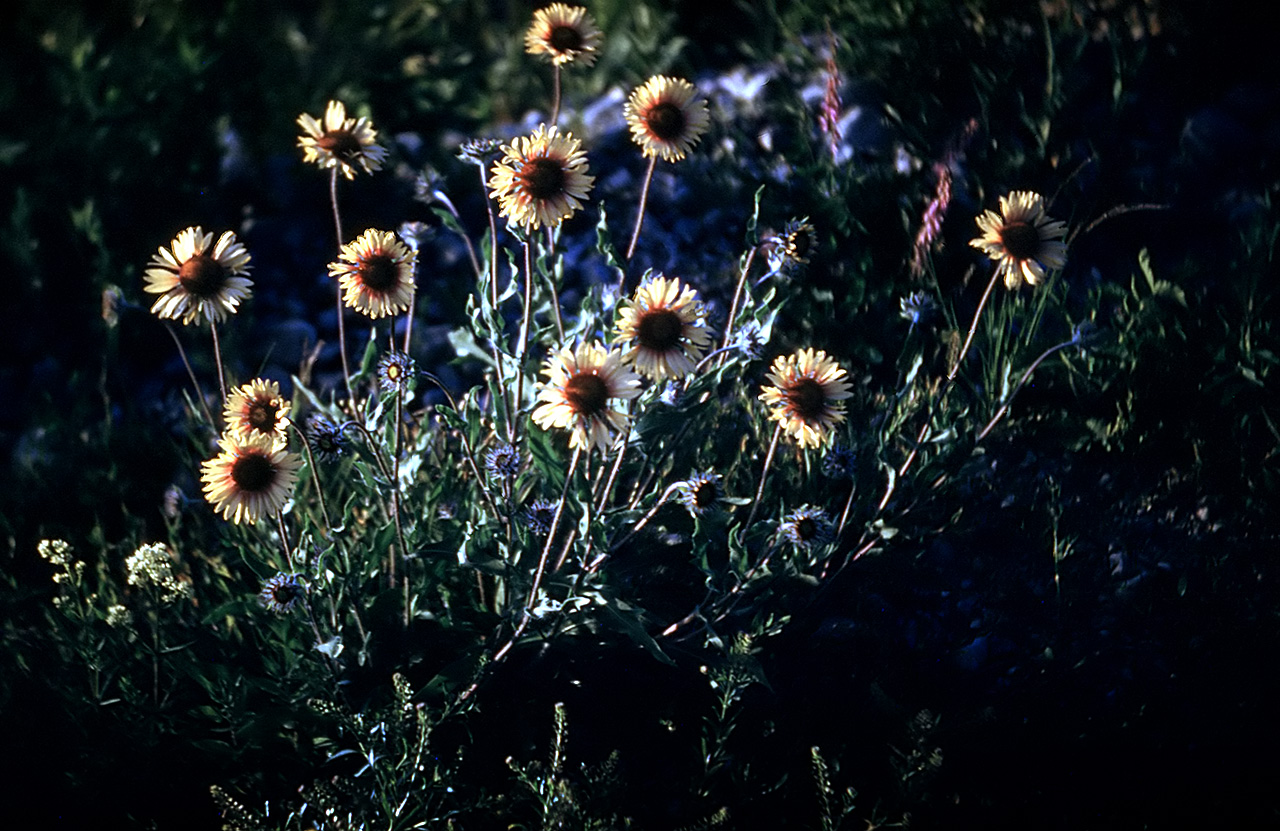Gallery containing public domain photos of flowers and plants from the Canadian National Parks – Western Canada. From the warm, temperate broadleaf forests of southern Ontario to the frigid Arctic plains of Northern Canada, from the wet temperate rainforests of the west coast to the arid deserts, badlands and tundra plains, the biodiversity of Canada’s plants is extensive.
Lilium philadelphicum, also known as the Wood Lily, Philadelphia Lily, Prairie Lily or Western Red Lily, is a perennial species of lily native to North America. It is widely distributed across North America, found in all Canadian provinces except the Maritimes, as well as in most eastern and central states. This lily grows to a height of approximately 30 to 90 centimeters, and produces red or orange blooms between June and August.
Castilleja miniata is a species of Indian paintbrush known by the common name giant red Indian paintbrush. It is native to western North America from Alaska to Ontario to California to New Mexico, where it grows usually in moist places in a wide variety of habitat types.
Cypripedium passerinum is a species of lady’s slipper orchid known by the common names sparrow’s-egg lady’s-slipper, spotted lady’s-slipper, and Franklin’s lady’s-slipper.
This orchid is a rhizomatous monocot, perennial herb growing to a maximum height around 50 centimetres (20 inches). There are 3 to 7 oval or lance-shaped leaves arranged alternately on the stem, each up to 19 centimetres (7.5 inches) long by 6 cm (2.4 in) wide.
Castilleja (Indian paintbrush) is a genus of about 200 species of annual and perennial herbaceous plants native to the west of the Americas from Alaska south to the Andes, northern Asia, and one species as far west as the Kola Peninsula in Siberia. These plants are classified in the broomrape family, Orobanchaceae.
The flowers of Indian paintbrush are edible, and were consumed in moderation by various Native American tribes as a condiment with other fresh greens. These plants have a tendency to absorb and concentrate selenium in their tissues from the soils in which they grow, and can be potentially very toxic if the roots or green parts of the plant are consumed.
The Ojibwe used a hairwash made from Indian paintbrush to make their hair glossy and full bodied, and as a treatment for rheumatism. The high selenium content of this plant has been cited as the reason for its effectiveness for these purposes. Nevada Indian tribes used the plant to treat sexually transmitted diseases and to enhance the immune system.
Aquilegia flavescens (Yellow Columbine) is a wildflower native to mountain meadows, open woods, and alpine slopes of the Rocky Mountains from Utah north to British Columbia and Alberta. The plant grows to 20-70 cm in height. While the most common flower color is yellow, portions of the flowers can also be yellow-pink, raspberry pink, white, and cream.
Winter jasmine (Jasminum nudiflorum) is a slender, deciduous shrub native to China. It grows to 3 m tall with arching green shoots and opposite, pinnate, dark green leaves. Each leaf is divided into three oval-oblong leaflets which are about 3 cm long. As its name suggests, in the Northern Hemisphere winter jasmine flowers from November to March. The solitary flowers, often appearing on the bare stems (hence the Latin nudiflorum, literally “naked flower”) have six petals and are bright yellow, or white.
